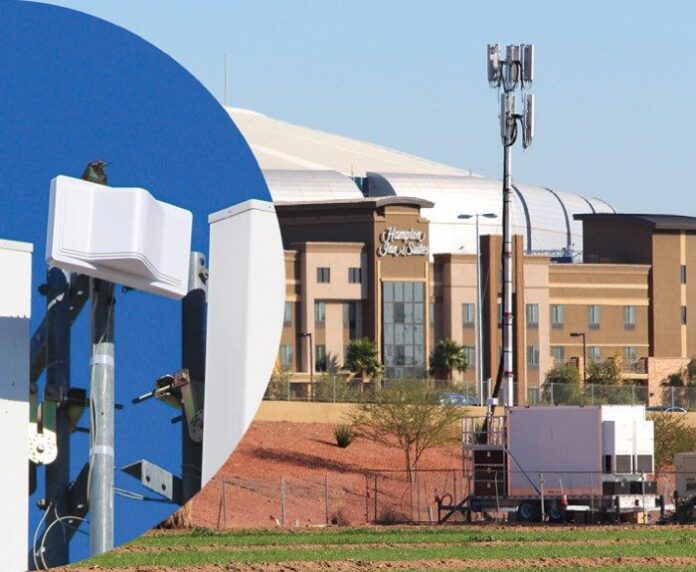From SXSW to the Super Bowl, Fastback brings speed, simplicity, and more locale options to temporary backhaul.
Major sporting matches, festivals and other crowded temporary events present significant, and expensive, problems for mobile network operators looking to provide robust and reliable service while keeping costs in check and navigating link obstructions, interference and other deployment challenges.
Fastback Networks has emerged as the go-to source for enabling mobile operators with temporary event wireless backhaul solutions that are easy to deploy, cost effective and provide ultra-high capacity with incredibly low latency in any operating conditions.
Fastback’s Intelligent Backhaul Radio (IBR), which started shipping in Sept. 2013, works in any-line-of-sight condition and can be deployed in less than an hour.
The IBR can support throughput of up to 800 Mbps with latency of 500 microseconds. The turnkey solution is less than one-square-foot, weighs less than eight pounds and cuts down on labor costs and set-up time by automatically aligning the two ends of a link.
Because the IBR operates in the unlicensed 5 GHz spectrum band, network operators don’t need to go through the costly and time-consuming process of frequency planning.
Fastback’s IBR was deployed for the annual South by Southwest (SXSW) interactive, film and music festival, which drew more than 230,000 people to downtown Austin, Texas, in March. The IBR delivered 100% uptime for the link during the 20-day deployment with available throughput of 675 Mbps in a congested radio environment, an increase of over 500% in throughput versus legacy technologies.
“From what we experienced at SXSW this year,” Terry Bruner, president of wireless construction and consulting firm SWCWC said, “Fastback is set to revolutionize the provisioning of bandwidth for temporary events.”
The IBR was also deployed by a Tier 1 mobile network operator for the 2015 Super Bowl at the University of Phoenix Stadium in Arizona.
Subscribe now to get the daily newsletter from RCR Wireless News
The operator used Fastback’s IBR to connect mobile cell sites to macro sites; the IBR link went from the shipping carton to operational in less than 60 minutes.
The speed and ease of deployment comes from IBR’s design, which trades complicated assembly for an all-in-one-unit. Contrast that 60 minute installation time with competitors’ products that can take four hours or longer for assembly and install.
The IBR delivered gameday aggregate throughput greater than 600 Mbps in unobstructed conditions and greater than 500Mbps in partially obstructed and non line-of-sight conditions.
The mobile operator’s network handled an astonishing 259% increase in data usage as compared to the big game the previous year.
Chris Thelander, vice president of sales for Fastback Networks, said festivals, sporting events, conventions and even emergency scenarios put a strain on network capacity.
“There’s going to be a lot of people there and the existing infrastructure isn’t going to be able to handle it.”
That’s where the IBR comes in: “It’s very simple and it’s very straightforward,” Thelander said. “We developed a device that delivers a significant amount of capacity and performance relative to its size and simplicity.”
The IBR provides high levels of performance in unobstructed line-of-sight conditions, as well as in partially obstructed near-line-of-sight and totally obstructed non-line-of-sight conditions, all while aligning automatically..
Thelander emphasized the importance of deployment time to both reduce operational expenses for the network operator and quickly add capacity to keep up with booming demand for connectivity.

